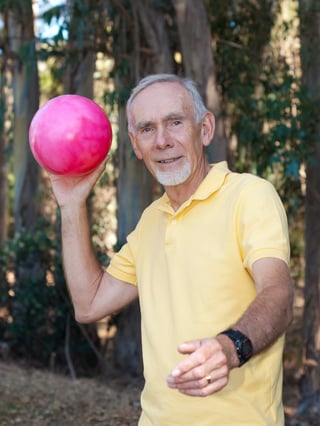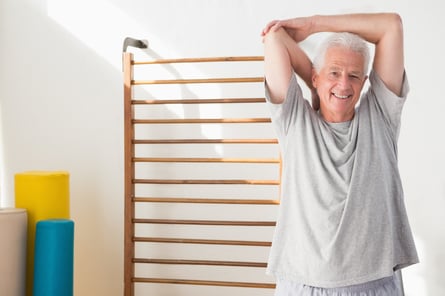.jpg?width=429&name=GettyImages-185211535%20(1).jpg) Tell me if this has ever happened to you: You are fast asleep in your warm, comfy bed. In the middle of that perfect sleep, you suddenly hear the telephone ringing. So you open your eyes, sit up, and slide your feet into your slippers. At this point, you are in a rush because you are now thinking that it could be an emergency. You take a few steps as quickly as you can to get to the phone, which happens to be all the way across the room. Suddenly, the front of your slipper nicks the carpet and you feel yourself going down and fast.
Tell me if this has ever happened to you: You are fast asleep in your warm, comfy bed. In the middle of that perfect sleep, you suddenly hear the telephone ringing. So you open your eyes, sit up, and slide your feet into your slippers. At this point, you are in a rush because you are now thinking that it could be an emergency. You take a few steps as quickly as you can to get to the phone, which happens to be all the way across the room. Suddenly, the front of your slipper nicks the carpet and you feel yourself going down and fast.
You reach for something to grab but find nothing to get ahold of, so you throw out your hands to try to stop yourself from hitting the floor too hard. Now you’re lying on the carpet in pain because your hands and arms hurt as well as anywhere else you may have hit your body on the way down.
Why Does the Carpet Hate You?
You then remember how the carpet used to be your friend at a very young age. You recall how you used to love the carpet so deeply that you would fall asleep on it at times. As you got older, the friendship seemed to fizzle out. Over the last few years, it seems as though your old friend has it out for you because every time you come across it, it takes you down—and down hard!
Fear not. There could be a much simpler solution to this problem than avoiding all carpet everywhere. Maybe the problem has more to do with your ankle mobility.
Ankle Mobility Exercises
Following are a few examples of exercises that you can do to improve your ankle mobility.
- Seated heel raises: Sit at the edge of a chair and place both feet on the ground with both knees at a 90-degree angle. While keeping your toes on the ground, raise your heels up for a count of 2 and down for a count of 2. Try doing 2 sets of 20 repetitions with both feet. You can challenge yourself by holding a weight or a heavy book on your knees for added resistance.
- Seated toe raises: Sit at the edge of a chair and place both feet on the ground with both knees at a 90-degree angle. While your heels stay on the ground, raise your toes up for a count of 2 and down for a count of 2. Try doing 2 sets of 20 repetitions with both feet.
- Seated ankle stretches: Sitting on a chair, raise one leg so that your foot is no longer in contact with the ground. Point your toes up and down. Try to do this stretch without kicking your leg up and down. Try doing 2 sets of 30 seconds with both feet.
- Seated ankle circles: Sitting in a chair, raise one leg, lifting the foot from the ground. While your leg is raised, move your foot around in circles. Try to do it without moving the entire leg. You really want to focus on only moving the foot. Try doing 2 sets of 30 seconds in both directions with both feet.
Moving Forward
Click here to get more information and images of exercises that you can do to improve your foot or ankle mobility. And click here to learn a little more about mobility and stability.
Let us know how your next encounter with that dreadful carpet went by commenting below.
NIFS Fitness Management's programming can also help residents improve their balance with regular exercise. Check out how Balance Redefined is changing residents lives!


 Certain exercises, such as the sit-to-stand and the seated row, should always be performed in one's routine. Certain experts recommend that one would eventually replace these exercises with a new one. The reasoning behind this is that it is believed that over time the muscles will grow accustomed to certain exercises and the effect will be lost. While this is slightly true, it's not true because of the exercise itself, but rather the variables of the exercise, such as the sets, reps, rest periods, tempo, etc.
Certain exercises, such as the sit-to-stand and the seated row, should always be performed in one's routine. Certain experts recommend that one would eventually replace these exercises with a new one. The reasoning behind this is that it is believed that over time the muscles will grow accustomed to certain exercises and the effect will be lost. While this is slightly true, it's not true because of the exercise itself, but rather the variables of the exercise, such as the sets, reps, rest periods, tempo, etc.
